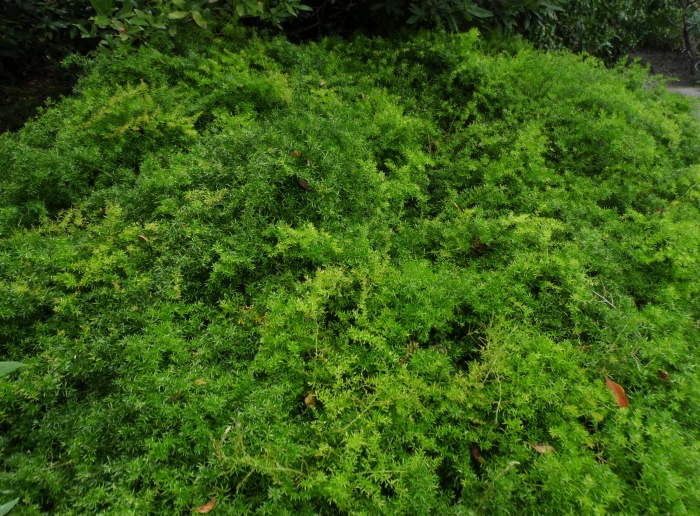Asparagus Fern
(Asparagus densiflorus)
Asparagus Fern (Asparagus densiflorus)
/
/

Krzysztof Ziarnek, Kenraiz
CC BY-SA 3.0
Image By:
Krzysztof Ziarnek, Kenraiz
Recorded By:
Copyright:
CC BY-SA 3.0
Copyright Notice:
Photo by: Krzysztof Ziarnek, Kenraiz | License Type: CC BY-SA 3.0 | License URL: https://creativecommons.org/licenses/by-sa/3.0 | Uploader: Kenraiz | Publisher: Wikimedia Commons | Title: Asparagus_densiflorus_kz1.JPG | Notes: {{Information |Description ={{en|1=Location taken: Merrifield Garden Center, Fairfax VA USA. Names: Boltonia asteroides 'Pink Beauty' (Linnaeus) L'Hér.., Boltons Aster, False Aster, False Chamomile, Pink Beauty Boltonia, Pink Beauty Th... |














































Estimated Native Range
Summary
Asparagus densiflorus, commonly known as asparagus fern, plume asparagus, or foxtail fern, is an evergreen perennial herb native to coastal dunes and rocky shores of southern Africa, from Mozambique to South Africa. Despite its common name, it is not a true fern but is related to the vegetable asparagus. It typically grows to a height of 60 cm (24 inches) and spreads to about 90 cm (35 inches). This plant features arching stems with dense, needle-like foliage, creating a bushy appearance. The ’Myersii’ cultivar, also known as the foxtail fern, is particularly noted for its upright, plume-like stems that resemble a fox’s tail. The flowers are small, white, and inconspicuous, followed by red berries that add to its ornamental value. Flowering occurs in the summer.
Asparagus densiflorus is valued for its lush, feathery foliage and is often used in hanging baskets, containers, and as a ground cover in frost-free climates. It is also popular in floral arrangements. While it prefers part shade, it can tolerate full sun if kept moist. It requires well-drained soil and can be drought-tolerant once established. In cultivation, it is relatively low-maintenance but may require regular watering during dry periods. However, it can become invasive when planted in the ground in suitable climates, spreading by tuberous root systems and seed dispersal. Gardeners should be cautious about planting it outdoors in regions where it is known to be invasive.CC BY-SA 4.0
Asparagus densiflorus is valued for its lush, feathery foliage and is often used in hanging baskets, containers, and as a ground cover in frost-free climates. It is also popular in floral arrangements. While it prefers part shade, it can tolerate full sun if kept moist. It requires well-drained soil and can be drought-tolerant once established. In cultivation, it is relatively low-maintenance but may require regular watering during dry periods. However, it can become invasive when planted in the ground in suitable climates, spreading by tuberous root systems and seed dispersal. Gardeners should be cautious about planting it outdoors in regions where it is known to be invasive.CC BY-SA 4.0
Plant Description
- Plant Type: Shrub, Herb
- Height: 2-3 feet
- Width: 3-4 feet
- Growth Rate: Moderate
- Flower Color: Green, White
- Flowering Season: Spring
- Leaf Retention: Evergreen
Growth Requirements
- Sun: Part Shade
- Water: Medium
- Drainage: Medium
Common Uses
Bird Garden, Border Plant, Deer Resistant, Drought Tolerant, Groundcover, Low Maintenance, Potted Plant, Rock Garden
Natural Habitat
Coastal dunes and rocky shores of southern Africa
Other Names
Common Names: Plume Asparagus, Foxtail Fern, Hängsparris, Natalsparris
Scientific Names: , Asparagus densiflorus, Protasparagus densiflorus, Asparagus myriocladus, Asparagopsis densiflora, Asparagus sarmentosus var. comatus, Asparagus sarmentosus var. densiflorus,
GBIF Accepted Name: Asparagus densiflorus (Kunth) Jessop